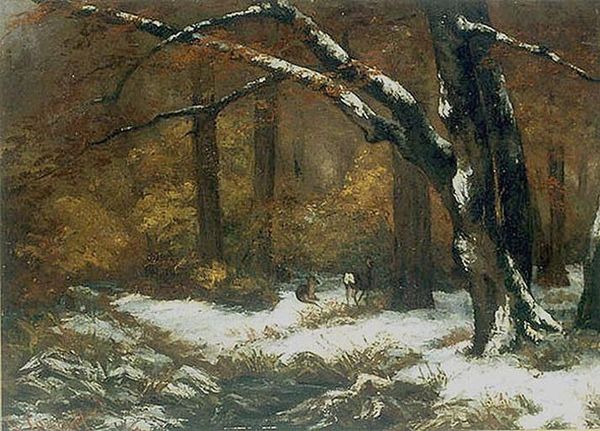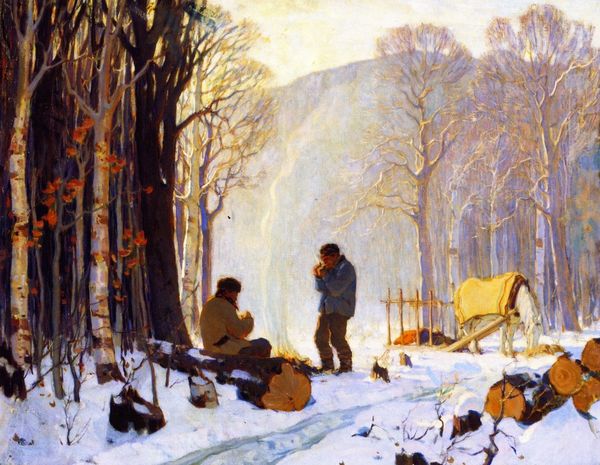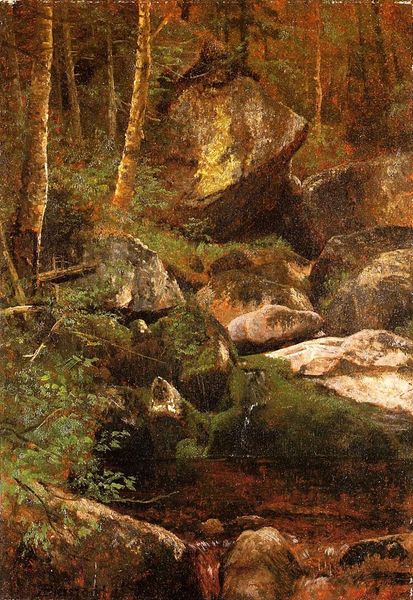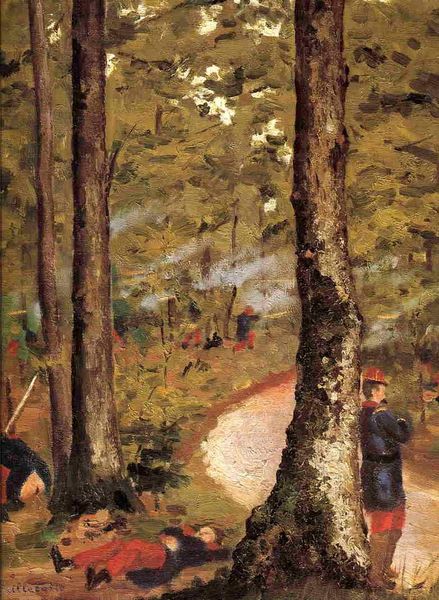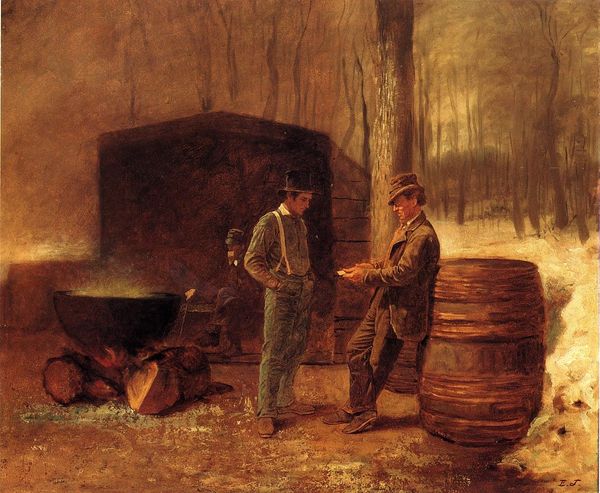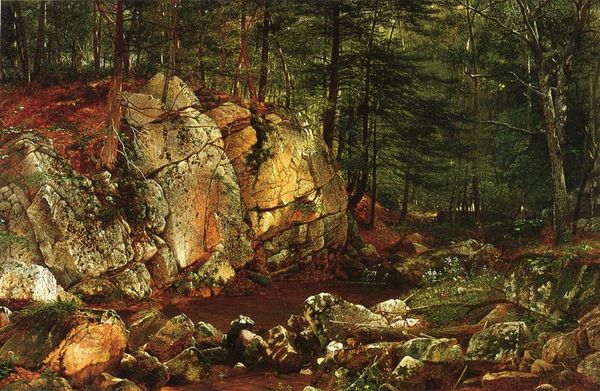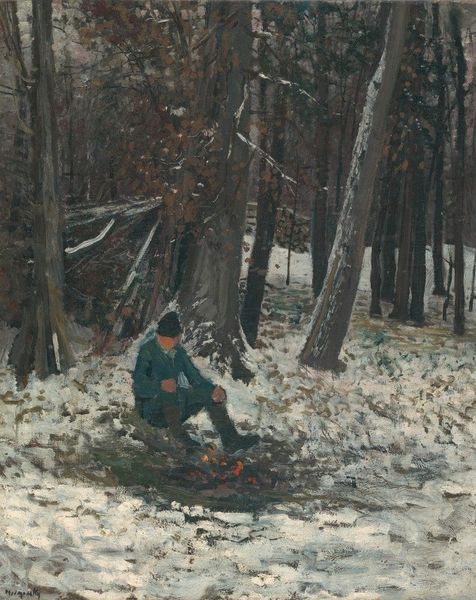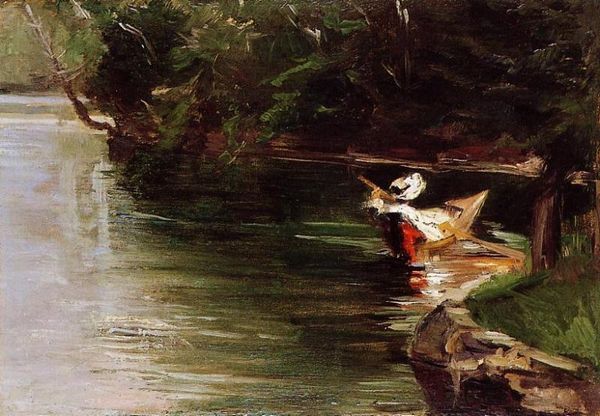
painting, oil-paint
#
portrait
#
painting
#
oil-paint
#
landscape
#
hudson-river-school
#
genre-painting
#
realism
Copyright: Public domain
Editor: Eastman Johnson's "A Boy in the Maine Woods," painted in 1868, uses oil paint to portray a figure within a wintery forest. The way he's posed near the felled timber really struck me. What stands out to you in this work? Curator: It's compelling to examine this piece through a materialist lens. Look at the timber itself, the literal wood: its extraction represents a significant interface between humans and the natural environment, one that fuels specific economies and necessitates the boy's labor. What tools do you imagine were used, and who controlled those means of production? Editor: I hadn’t thought of it that way! So you're focusing less on the romantic aspects of the landscape and more on what the scene tells us about work and resource extraction? Curator: Exactly. Consider the pigment itself: where did these materials come from, and how were they processed? Even the canvas had to be woven. The image becomes a record of numerous labor processes, not just a depiction of a boy in nature. Are we celebrating this boy's interaction with nature or critiquing how his youth is put to labor? Editor: I see, so the painting becomes almost a document of material culture. Thinking about the canvas and paint in that way really does change my perspective on the image. Curator: Indeed. Even Johnson's choice to depict this specific scene says something about his position within a culture grappling with industrialization and its effects on both the landscape and the lives of individuals like this young laborer. This connects artmaking itself to broader socio-economic systems, wouldn’t you say? Editor: Definitely. I appreciate how your approach shifts the focus from just *seeing* the image to *understanding* its production and its connection to broader economic realities. Curator: Precisely. Art provides access to an understanding of how materiality shapes culture.
Comments
No comments
Be the first to comment and join the conversation on the ultimate creative platform.
